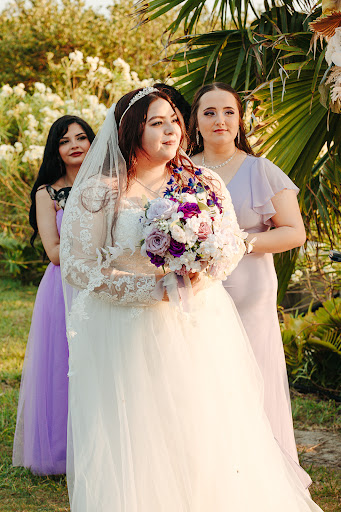Free Wedding Budget Template
By Weddings By Wendi – Your Texas Hill Country wedding planner
Free Wedding Budget Template: Plan & Track Every Expense
A free wedding budget template is an editable spreadsheet that centralizes estimated costs, actual payments, and vendor notes so engaged couples can plan with clarity and control. This article explains how a budget template works, why it reduces planning stress, and how to convert priorities and funds into a realistic spending plan using an editable Google Sheet, Excel workbook, or printable PDF. Weddings By Wendi provides this free template as a practical planning tool and lead magnet to help couples start budgeting quickly; readers can download the files and follow the step-by-step instructions below to customize the template for their wedding. Many couples face scattered invoices, missed deposits, and surprise fees; a structured expense tracker solves those pain points by enforcing a payment schedule, highlighting overruns, and reserving contingency funds. This guide walks through why the template matters, how to download and use it, a step-by-step budgeting process, a full breakdown of budget categories, expert saving tips, and how Weddings By Wendi can provide optional support for budget management and day-of coordination. Throughout, you’ll find lists, practical EAV tables, and concise examples to make the template immediately useful for planning your Texas wedding or any event.
Why Is a Free Wedding Budget Template Essential for Engaged Couples?
A wedding budget template is essential because it transforms diffuse costs into a single, updateable plan that shows estimated versus actual spending, payments due, and remaining balances. That mechanism reduces cognitive load and prevents duplicate or missed payments by automating totals and offering clear status indicators for each line item. Using a template produces three immediate benefits: stress reduction, better financial visibility, and fewer hidden costs — each supporting a smoother planning experience. The next subsections show how those benefits occur in practice and which expense buckets the template tracks to keep you organized.
How Does a Wedding Budget Template Reduce Planning Stress?
A template reduces planning stress by replacing scattered emails, handwritten notes, and multiple spreadsheets with a single source of truth that both partners and vendors can consult. Real-time totals and conditional formatting flag overdue payments and budget variances so couples can address problems before they escalate. Shareable formats like Google Sheets allow collaborators to comment and update without sending files back and forth, which cuts coordination time and revisions. These automation and sharing features set the stage for practical next steps: tracking specific expense categories and identifying possible hidden fees.
What Key Wedding Expenses Does the Template Help You Track?
The template tracks the major expense buckets wedding planners and couples commonly monitor, mapping categories to typical line items so nothing gets overlooked. Core categories include venue and catering, photography and videography, attire and beauty, decor and flowers, rentals and staffing, stationery and favors, and a contingency fund for unexpected charges. Each category in the tracker provides fields for vendor name, deposit amount, due dates, payment method, and notes so you can trace every transaction from estimate to final payment. This categorical visibility makes it easier to reallocate funds when priorities change and prepares you for negotiating vendor terms.
How Can a Budget Template Prevent Hidden Wedding Costs?
Hidden costs arise from service fees, taxes, overtime, permits, and gratuities that are easy to miss when planning informally; a template prevents these omissions by including a checklist for supplemental items and a contingency line. The template recommends reserving a contingency percentage and provides a dedicated row for taxes, service charges, and vendor add-ons so they are visible in the running total. Using scheduled payment reminders and a vendor-contract review checklist within the tracker reduces the chance of late fees or surprise surcharges. With those controls in place, couples can plan with confidence and avoid last-minute budget shocks.
How Do You Download and Use the Free Wedding Budget Spreadsheet?
This section explains available formats, quick-start steps after downloading, and how to adapt the file to your wedding specifics. The downloadable package includes an editable Google Sheets file for collaboration, an Excel workbook for offline edits and advanced formulas, and a printable PDF as a vendor-facing reference. After downloading, set your total budget, fill in guest count and priority items, and enter vendor estimates to see automatic allocation and remaining balance calculations. If you prefer personalized help, Weddings By Wendi offers optional support to customize the template, interpret local cost ranges, and integrate vendor payment schedules into the sheet.
This comparison clarifies that Google Sheets is ideal for joint editing, Excel for offline customization or finance imports, and PDF for polished, shareable summaries.
- Quick-start steps after download:
- Set your total wedding budget and guest count in the top summary fields.
- Enter vendor estimates by category and update deposit/due date fields.
- Use the payment tracker and contingency calculator to monitor cash flow.
These numbered steps provide a fast onboarding path; the next subsections detail format pros and local customizations to make the template match Central Texas planning realities.
What Formats Are Available for the Wedding Budget Template?
The template is available as an editable Google Sheets file, a downloadable Excel workbook, and a printable PDF summary to suit different planning styles and collaboration needs. Google Sheets supports simultaneous edits, comment threads, and version history, which is useful when partners or planners update the budget in real time. Excel offers powerful formula support and offline reliability for users who prefer to maintain a local copy or apply custom macros. The PDF gives a clean vendor-facing snapshot for meetings and contract reviews while preserving the official numbers without accidental edits.
How Is the Template Customized for Texas Weddings?
The template includes optional fields and sample ranges tailored for Central Texas planning, with notes calling out venue fees, permit considerations for outdoor ceremonies, and seasonal vendor constraints common in Austin and surrounding areas. Example line-item ranges reflect regional cost drivers like site minimums, bar service options, and local sales tax considerations so couples can model realistic scenarios. There are also editable notes to add region-specific items such as beach ceremony permits for coastal locations or heat-mitigation rentals for summer events. These local cues help translate national averages into practical expectations for Texas weddings.
What Features Make the Template Easy to Use?
User-friendly features include automatic totals, conditional formatting to highlight overdue payments, a deposit schedule with due-date reminders, and a contingency calculator that derives a recommended reserve percentage. The template provides pre-filled categories and formulas that compute estimated totals, actual spend, and remaining budget, reducing manual arithmetic errors. Color-coded status indicators mark items as Paid, Pending, or Overdue to focus attention on immediate actions. Tooltips and short instructions attached to key fields help new users understand where to enter data and how to interpret the summary dashboard.
What Are the Step-by-Step Instructions to Create and Manage Your Wedding Budget?
A practical process for budget creation begins with calculating available funds, converting priorities into percentage allocations, and then tracking actual payments against estimates. The template guides you through four core steps: determine your total budget, allocate by category, enter vendor estimates and deposits, then review monthly to adjust forecasts. Regular reconciliation of invoices and a disciplined payment schedule will prevent creeping overspend and allow you to reassign funds when priorities shift. The table below provides recommended allocation ranges and example cost bands to seed your template with realistic numbers.
Use this EAV table to compare categories, typical line items, and suggested allocation percentages or example cost ranges as input into your budget template.
- Four practical steps to manage the budget:
- Calculate available funds, including contributions and savings.
- Allocate percentages to categories based on priorities.
- Track deposits, reconcile invoices, and adjust monthly.
These steps create a cyclical budgeting practice: plan, commit, monitor, and adapt — which keeps your financials aligned with evolving decisions.
How Do You Determine Your Overall Wedding Budget?
Determine your overall wedding budget by totaling available funds from all sources — personal savings, contributions from family, and any financing — then subtracting non-wedding financial obligations to set a realistic ceiling. Use a simple worksheet line for each contribution type and a running subtotal so you can see the working budget immediately. Discuss priorities with your partner to divide funds into “must-haves” and “nice-to-haves” before allocating percentages; clarity about what matters ensures money goes where it creates the most value. This preparatory calculation leads directly into percentage allocation and category-level planning.
How Should You Allocate Funds Across Wedding Budget Categories?
Allocate funds by applying recommended percentage ranges as a starting point, then tweak them to reflect your priorities—for example, shifting funds from decor to photography if capturing memories is more important. The template provides editable percentage cells that automatically recalculate category totals when you change the overall budget, making trade-offs visible in real time. Include a contingency percentage in your allocation to absorb unforeseen costs and protect high-priority categories from being cut later. Regularly revisit allocations as vendor proposals arrive and use the template’s scenario fields to test “what-if” adjustments.
How Do You Track Actual Spending and Adjust Your Budget?
Track actual spending by recording each vendor invoice, deposit, and payment in the payment tracker rows, reconciling the template with bank or credit card statements monthly. Use the template’s variance column to highlight where actual spending deviates from estimates and flag categories that need reallocation. When overruns occur, cover them by either using contingency funds or trimming lower-priority line items, guided by your pre-established priority list. Monthly reviews and reconciliation keep the budget current and prevent last-minute scrambling.
What Are the Key Wedding Budget Categories to Include in Your Expense Tracker?
An expense tracker should include every major category and sub-items so that couples do not overlook line items that together create significant cost. The following EAV table breaks key categories into their parts and offers notes on which sub-items to include in each tracker row. Filling in these sub-items helps ensure the template captures meronyms like venue costs, catering per-person charges, photography packages, attire expenses, decor elements, and the contingency line.
This table organizes category components so you can copy them as line items in the template and avoid common omissions.
How Much Should You Budget for Venue and Catering?
Venue and catering typically consume the largest share of a wedding budget because per-guest food costs and venue minimums scale with guest list size and service level. Key cost drivers include guest count, menu selection, service style (plated vs buffet), and beverage options; bar packages and staffing can shift costs substantially. To manage costs, consider trimming the guest list, choosing a seasonal menu, or limiting full open-bar hours to defined reception periods. These venue and catering decisions influence many downstream costs and should be set early in the budgeting process.
What Are Typical Costs for Photography and Videography?
Photography and videography commonly use package pricing that bundles coverage hours, a second shooter, and edited deliverables; prices vary by experience and demand. Must-have deliverables to budget for include ceremony coverage, a portrait session, and a digital gallery or highlight video; additional items like albums and extended video edits are optional add-ons. Ask for an itemized proposal so you can enter each deliverable into the template and decide which components are essential. Negotiating which hours and deliverables you need is an effective way to find savings without sacrificing quality.
How Do Attire and Beauty Expenses Fit into Your Budget?
Attire expenses include the purchase or rental of wedding outfits, alterations, and professional hair and makeup for the bride, groom, and wedding party; trials should be budgeted as separate items. Alterations can be a hidden cost, and same-day trial changes may incur rush fees, so include those in the template as specific line items. Groom and wedding-party attire, shoes, and accessories should also be recorded to avoid last-minute shortfalls. Planning fittings and trials early gives you time to adjust choices if they exceed budget.
What Should You Expect for Decor, Flowers, and Entertainment?
Decor and flowers include ceremony and reception florals, centerpieces, linens, lighting, and rental items — many of which are seasonal or rental-based and should be budgeted individually. Entertainment costs vary by whether you hire a DJ, band, or other performers and whether audiovisual equipment and sound technicians are required. Consider using focal installations for impact (ceremony arch, statement lighting) and simplifying table centerpieces to control costs. Rental-versus-purchase decisions should be modeled in the template to compare total costs including delivery and breakdown fees.
How Do Stationery, Favors, and Miscellaneous Costs Impact Your Budget?
Smaller categories like invitations, postage, favors, transportation, permits, and gratuities add up and often surprise couples who omit them during early planning. Itemize invitations, RSVP cards, postage, and calligraphy services; add shipping or address-cleanup costs if needed. Favors, welcome bags, and small guest comforts (water bottles, sunscreen for outdoor ceremonies) should be counted as line items rather than ad hoc expenses. Reserving a small miscellaneous fund or increasing contingency by a few percentage points will absorb these often-overlooked charges.
What Expert Wedding Budget Tips Can Help You Save Money and Stay on Track?
Expert budgeting centers on prioritizing what matters most, negotiating with purpose, and using data-driven decisions from the template to avoid impulse spending. Start by ranking your top three priorities and ensure those categories get funded first; everything else is negotiable and adjustable. Negotiation strategies include asking for off-peak pricing, bundling services, and requesting itemized proposals that expose negotiable components. The template enables scenario testing, showing the financial impact of choices so you can make intentional trade-offs rather than reactive cuts.
- Prioritize three must-haves and fund them before allocating to other categories.
- Negotiate package components and request itemized pricing to identify savings.
- Use the template’s scenario fields to model trade-offs before making decisions.
How Can You Prioritize Spending to Maximize Your Budget?
Prioritize spending by creating a ranked list of must-haves, nice-to-haves, and low-priority extras, then allocate percentages accordingly so money flows to what matters most. Completing this prioritization exercise before signing vendor contracts prevents emotional overspending on trending items or impulse upgrades. If a category threatens to exceed its allocation, consult the priority list and the template’s scenario outputs to decide which items to trim. This disciplined approach helps maintain the overall budget while delivering on the elements that matter most to the couple.
What Are Effective Strategies for Negotiating with Wedding Vendors?
Effective negotiation relies on understanding vendor cost drivers and timing, such as off-peak discounts, midweek availability, and package flexibility; ask vendors which parts of their package are optional or scalable. Use the template to demonstrate your total budget and ask vendors for options that fit your allocation, which encourages collaborative solutions rather than simple discounts. Consider bundling multiple services with a single vendor to secure package pricing and reduce coordination fees. Clear, polite negotiation framed by concrete budget numbers yields better results than vague requests for a lower price.
How Does Using a Budget Template Improve Financial Planning?
A structured template improves financial planning by creating accountability, enabling scenario planning, and integrating payment schedules with vendor contracts to avoid missed deposits. The template’s variance reporting and monthly reconciliation steps make it straightforward to spot overruns early and course-correct before costs cascade. Scenario planning columns allow you to test guest-count changes, menu upgrades, or decor enhancements and see their impact immediately. This disciplined, data-driven approach reduces overspend and preserves priorities.
How Can Weddings By Wendi Support Your Wedding Budget and Planning Needs?
Weddings By Wendi is a full-service wedding and event planning company serving Central Texas areas and offers planning services designed to pair with the free budget template. The team can customize the downloadable spreadsheet for your wedding, import vendor proposals, set up payment schedules, and provide hands-on budget management as part of full-service planning or day-of coordination. For couples who prefer expert support, Weddings By Wendi can review the filled template, suggest localized cost adjustments, recommend vetted vendors, and assist with contract negotiation to align proposals with your allocation. If you’re interested in planner-led help, you can schedule a consultation to review the template together and discuss service options.
What Full-Service Wedding Planning Services Include Budget Management?
Full-service planning packages typically include vendor sourcing with an emphasis on budget fit, contract review to avoid hidden fees, creation of detailed payment schedules, and regular budget reconciliation reports. The planner’s role is to steward your priorities while handling negotiation and vendor communications to keep spending aligned with your allocations. Regular check-ins with budget summaries keep you informed and provide opportunities to reallocate funds as proposals arrive. Working with a planner means the template becomes a living document managed by professionals alongside you.
How Does Day-of Coordination Help Manage Last-Minute Expenses?
Day-of coordination minimizes last-minute expenses by ensuring vendors adhere to contracted services, handling unexpected vendor requests that might otherwise generate emergency fees, and coordinating gratuities and final payments to avoid confusion. Coordinators can also manage on-site logistics that otherwise result in rushed rentals or expedited shipping, which escalate costs rapidly. Having a coordinator reduces the chance of onsite decisions that cause budget overruns and ensures agreed-upon vendor responsibilities are enforced. This protective role often saves money by preventing reactive purchases on the wedding day.
How Do You Schedule a Free Consultation to Discuss Your Wedding Budget?
To schedule a free consultation, prepare a brief budget range, guest count estimate, and a list of top priorities so the planner can provide focused guidance during the meeting. In the consultation you can review the free template, discuss customization options and service levels, and receive initial recommendations for local vendors and realistic cost benchmarks. Expect the planner to ask about timelines, venue preferences, and flexibility in priorities to offer targeted next steps. Booking a consultation converts the template from a self-serve tool into a collaborative planning process if additional hands-on support is desired.
What Are the Most Common Questions About Using a Free Wedding Budget Template?
This final section answers practical implementation questions many couples ask, helping you decide whether to build from scratch, use regional averages, and integrate budgeting apps. The answers are short and optimized for quick reference so you can act immediately with the template in hand.
How Do I Create a Wedding Budget Spreadsheet from Scratch?
Creating a spreadsheet from scratch requires columns for category, item, estimated cost, actual cost, deposit amount, paid status, and notes; apply formulas for totals and remaining balance. Include a contingency row and date fields for due dates to generate a simple payment schedule. Use conditional formatting to flag overdue items and a summary sheet to roll category totals into an overall dashboard. Although building from scratch is possible, the downloadable template saves time by including pre-built formulas and category lists ready for immediate use.
What Is a Realistic Wedding Budget for Texas Weddings?
A realistic wedding budget varies widely depending on guest count, venue choice, and service level; regional averages suggest the central cost drivers are venue and catering, so guest count and menu selections will largely define your total spend. Use the template to model low, medium, and high scenarios, adjusting per-guest costs and venue options to see how totals shift. Central Texas planning notes in the template highlight typical cost considerations relevant to the area so you can tailor national averages to local expectations. Modeling multiple scenarios in the sheet yields a practical, personalized budget that reflects your priorities.
How Much Should I Spend on Each Wedding Vendor Category?
Standard percentage guidelines provide a starting point—allocate the largest share to venue and catering, then assign mid-range percentages to photography, decor, and entertainment while reserving contingency. Deviate from these percentages intentionally if you prioritize photography, food, or another category; the template’s percentage fields make such reallocation simple and transparent. Record each vendor quote as a separate line item so trade-offs are visible when you adjust percentages. These structured allocations transform subjective preferences into objective budget decisions.
Are There Free Wedding Planning Apps That Integrate with Budget Templates?
Several planning apps accept CSV imports or link to shared Google Sheets, making it possible to integrate the budget template with timeline and guest-list tools; choose an app that supports CSV import or direct Google Sheet connections for seamless data transfer. App integration offers benefits like centralized guest management and task tracking while the template remains the authoritative financial record. Exporting or syncing data periodically ensures your financial tracking stays current across tools. Using the template as the single source of truth simplifies integration and prevents duplicate entries.
Frequently Asked Questions
What are the benefits of using a wedding budget template over traditional budgeting methods?
Using a wedding budget template offers several advantages over traditional methods like handwritten notes or basic spreadsheets. It centralizes all financial information in one place, making it easier to track expenses and payments. The template automates calculations, reducing the risk of errors and ensuring accurate totals. Additionally, it provides visual indicators for overdue payments and budget variances, helping couples stay organized and informed. This structured approach minimizes stress and enhances financial visibility, allowing for more effective planning and decision-making.
Can I customize the wedding budget template for my specific needs?
Yes, the wedding budget template is designed to be highly customizable. Users can adjust categories, add or remove line items, and modify percentage allocations to reflect their unique priorities and financial situations. The template allows for the inclusion of specific local costs, such as venue fees and seasonal considerations, making it adaptable to various wedding styles and locations. This flexibility ensures that couples can tailor the template to meet their specific budgeting needs and preferences, enhancing its overall effectiveness.
How often should I update my wedding budget template?
It’s advisable to update your wedding budget template regularly, ideally on a monthly basis or whenever significant expenses occur. Frequent updates help you track actual spending against your estimates, allowing for timely adjustments if you exceed your budget in certain categories. Regular reconciliation with invoices and bank statements ensures that your financial records remain accurate and up-to-date. This practice not only keeps you informed about your financial status but also helps prevent last-minute surprises as your wedding date approaches.
What should I do if my actual spending exceeds my budget?
If your actual spending exceeds your budget, first identify which categories are over budget and by how much. Use the template’s variance column to highlight these discrepancies. Next, consider reallocating funds from lower-priority categories or utilizing your contingency fund to cover the overruns. If necessary, revisit your priorities and make adjustments to your spending plan. Open communication with your partner about these changes is crucial to ensure that both of you are aligned on financial decisions moving forward.
Are there any hidden costs I should be aware of when planning my wedding budget?
Yes, hidden costs can often arise during wedding planning, including service fees, taxes, overtime charges, and gratuities. It’s essential to account for these potential expenses in your budget template. The template includes a checklist for supplemental items and a contingency line to help you prepare for unexpected charges. Additionally, reviewing vendor contracts carefully and asking about any additional fees can help you avoid surprises. Being proactive about these costs will lead to a more accurate and realistic budget.
How can I ensure that my wedding budget aligns with my priorities?
To ensure your wedding budget aligns with your priorities, start by ranking your must-haves, nice-to-haves, and low-priority items. Allocate funds based on this ranking, ensuring that the most important categories receive adequate funding. The template allows for easy adjustments, so you can see the impact of reallocating funds in real time. Regularly revisit your priorities as vendor proposals come in, and use the template’s scenario fields to model different budget allocations. This disciplined approach helps maintain focus on what truly matters to you as a couple.
What resources are available for couples who need additional help with budgeting?
Couples seeking additional help with budgeting can access various resources, including wedding planning services like those offered by Weddings By Wendi. They provide personalized support in customizing the budget template, interpreting local cost ranges, and integrating vendor payment schedules. Additionally, online forums, wedding planning apps, and financial advisors specializing in event planning can offer valuable insights and assistance. Utilizing these resources can enhance your budgeting experience and ensure that you stay on track throughout the planning process.








































